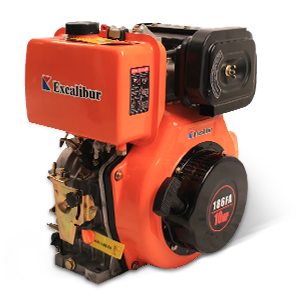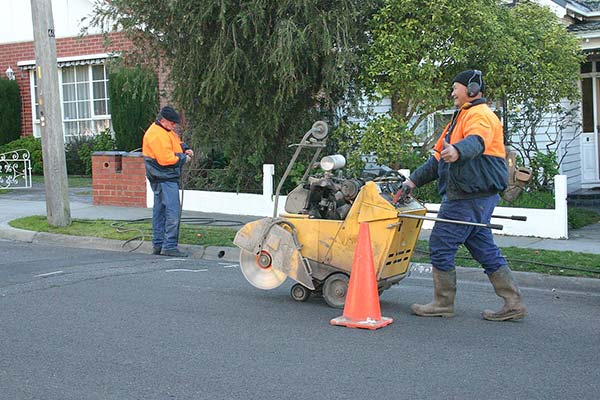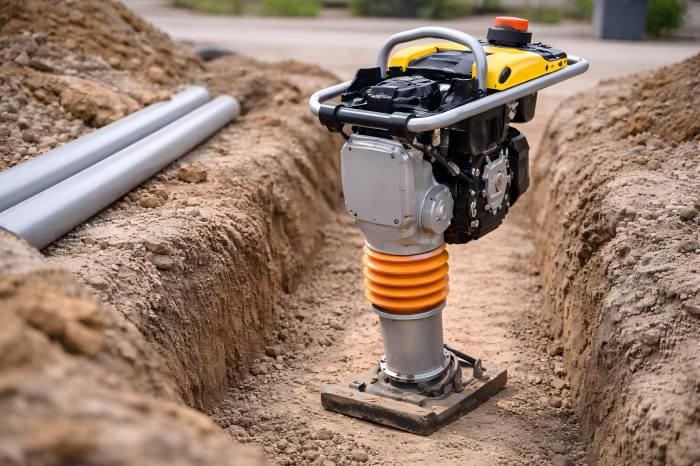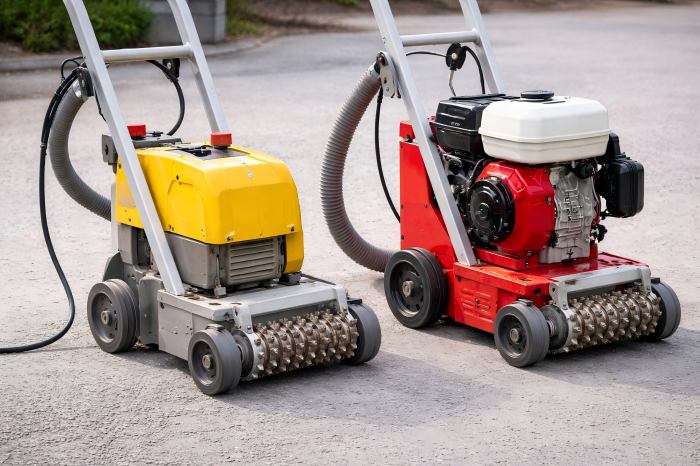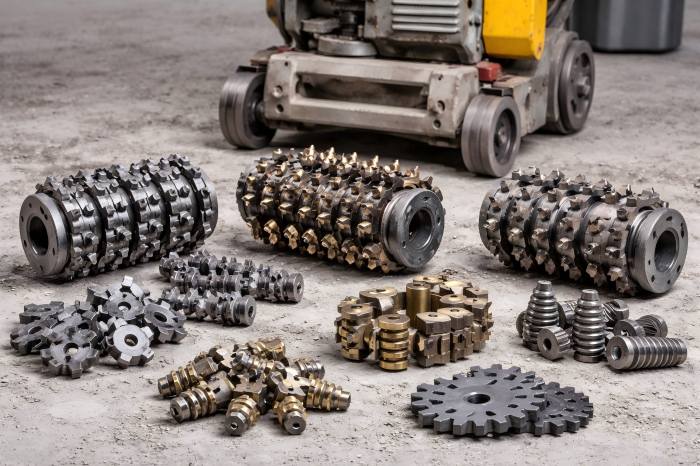Whether you’re carving expansion joints, removing damaged slabs, or installing utilities beneath the surface, choosing the right concrete saw can dramatically impact efficiency, precision, and safety. As a professional manufacturer of concrete cutting equipment, we understand that not all saws are created equal—and neither are job sites.
What Is a Concrete Saw?
A concrete saw is a power tool with a diamond blade, used to cut concrete, asphalt, brick, masonry, and stone across various construction applications.
Concrete saws are essential in:
- Road construction
- Building demolition
- Plumbing and electrical trenching
- Expansion joint cutting
- Rescue operations
Main Types of Concrete Saws
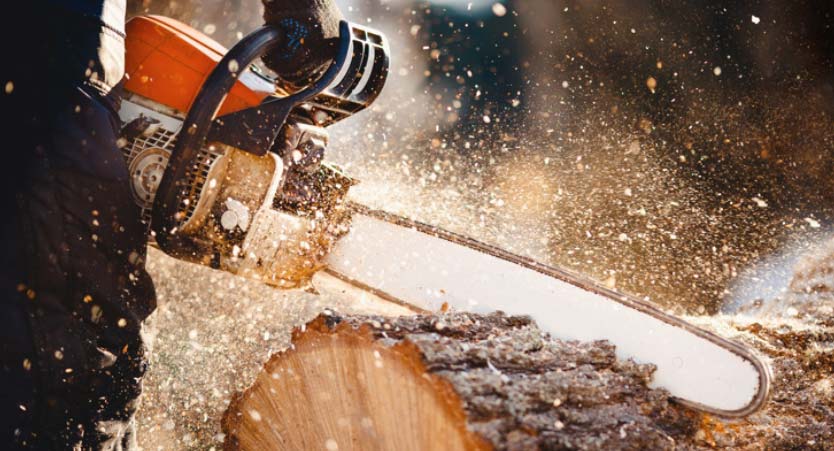
Chainsaw Concrete Saws
Concrete chainsaws look similar to wood-cutting chainsaws but are engineered to cut into concrete, reinforced concrete, and masonry. They use a special diamond-studded chain and are ideal for plunge cuts and tight corners.
Applications
- Cutting door/window openings
- Square corners with no overcutting
- Cutting through concrete pipes or manholes
Features
- Precise and deep cuts (up to 25 inches)
- Can start cutting from the center (no drilling)
- Low dust when water-fed
| Pros | Cons |
| √ Allows plunge cutting | × Shorter blade life than walk-behind |
| √ Clean, square corner cuts | × Requires more maintenance |
| √ Lightweight and portable | × Slower cutting speed |
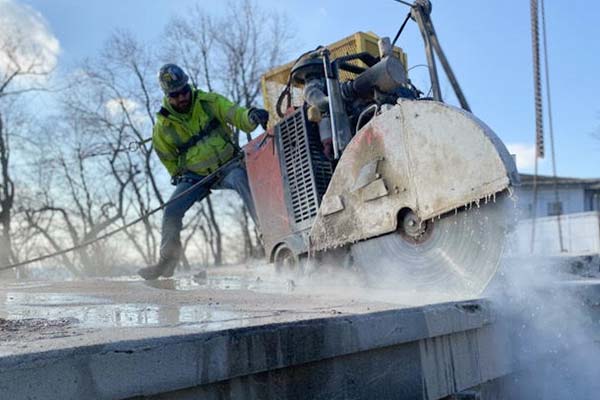
Walk-Behind Concrete Saws
Walk-behind saws—often referred to as floor saws or road saws—serve as the backbone of concrete cutting operations. Designed for straight-line cutting, they’re used in outdoor jobs and large-scale floor projects. Available in gas, diesel, electric, and hydraulic power options.
Applications
- Cutting slabs and asphalt roads
- Expansion/control joints
- Demolition and resurfacing
Features
- Large blade diameters (14″–72″)
- Depths of cut up to 30 inches
- Stable and fast cutting with guided path
| Pros | Cons |
| √ Efficient for large areas | × Not suitable for vertical or tight cuts |
| √ Powerful and durable | × Heavy and less portable |
| √ Excellent depth capacity | × Generates dust and noise (if dry cut) |
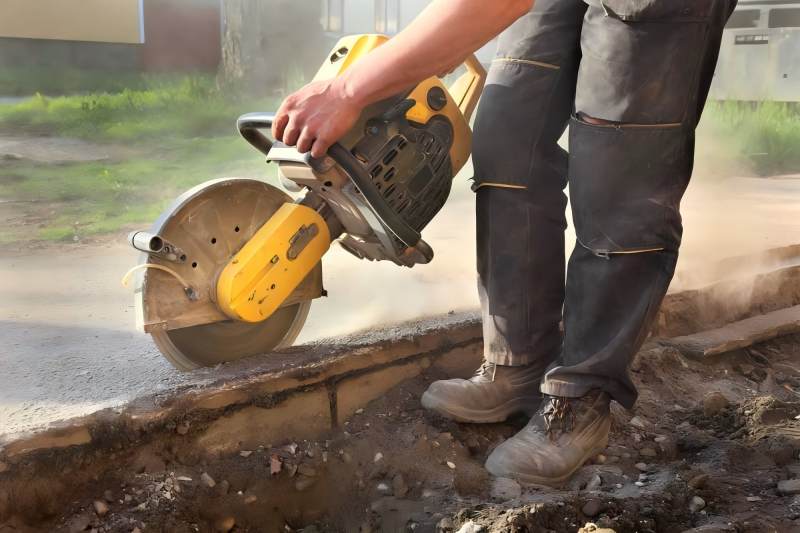
Circular Concrete Saws (Handheld Cut-Off Saws)
These handheld saws use a rotating diamond blade and are often powered by gas or electricity. Also called cut-off saws, they’re ideal for portability and quick jobs.
Applications
- Cutting wall blocks, curbs, and tiles
- Surface cuts on slabs
- Pipe cutting
Features
- Blade sizes: 12″–16″
- Cutting depth: Up to 6 inches
- Gas-powered models for field use
| Pros | Cons |
| √ Lightweight and easy to handle | × Limited cutting depth |
| √ Quick to set up and use | × Can produce uneven cuts if handheld |
| √ Great for tight spots | × Vibration can cause operator fatigue |
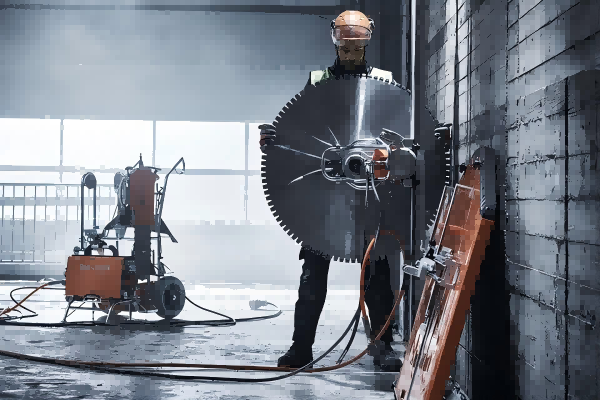
Wall Saws
Wall saws are track-mounted machines used for precise vertical or sloped cuts in walls, floors, or ceilings. They typically run on electric or hydraulic power and feature large circular blades.
Applications
- Door and window openings
- Bridge and structural cutting
- Retrofitting buildings
Features
- Blade diameters up to 72″
- Depths of cut: up to 36 inches
- Smooth, straight cuts with minimal vibration
| Pros | Cons |
| √ Extremely accurate | × Requires setup time and track mounting |
| √ Handles thick concrete | × More expensive than handheld units |
| √ Clean, controlled cutting | × Requires experienced operator |
Power Source Comparison
Choosing the right power source depends on job location, emissions restrictions, and runtime needs.
| Power Source | Used In | Advantages | Limitations |
| Gasoline | Outdoor worksites | High power, portable | Emissions, not for enclosed areas |
| Diesel | Large-scale road work | Efficient, long runtime | Heavy, emissions, noise |
| Electric | Indoor or tight spaces | Quiet, zero emissions | Requires power access, lower power |
| Hydraulic | Specialized applications | Compact, no emissions, underwater capable | Needs hydraulic system, costly setup |
| Battery | Small indoor jobs | Cordless, clean | Limited runtime, lower torque |
Concrete Saw Blade Types
Selecting the right blade is equally crucial as selecting the saw itself. The two major types are:
- Abrasive Blades: Low-cost and suitable for soft materials. Wear out faster.
- Diamond Blades: Superior in durability, cutting speed, and quality. More expensive but long-lasting.
Blade Factors to Consider:
- Diameter (determines cutting depth)
- Segment height and type (continuous rim, segmented, turbo)
- Blade material and bonding for specific materials (asphalt, green concrete, cured concrete)
Key Selection Factors
Type of Cut
- Straight long cuts: Walk-behind saw
- Openings in vertical surfaces: Wall saw
- Precision internal cuts or plunge cuts: Chainsaw
- Fast, shallow cuts in tight spots: Circular saw
Cutting Depth
- Up to 6 inches: Circular or Chainsaw
- 6–14 inches: Walk-behind
- 14 inches or more: Walk-behind or Wall saw
Work Environment
- Indoor: Electric or hydraulic-powered units
- Outdoor: Gasoline or diesel-powered tools
- Wet vs. dry: Use water-fed models when dust control is needed
Frequency of Use
- Occasional use: Circular saws or chainsaws
- Frequent use: Walk-behind or wall saws with robust build
Operator Experience
- Beginners: Handheld circular saws
- Professionals: Wall saws, walk-behind models, chainsaws
Comparison Table: Concrete Saw Types
| Saw Type | Max Cutting Depth | Best For | Portability | Skill Level | Common Blade Size |
| Chainsaw | 25″ | Plunge cuts, corners | High | Intermediate | Chain blade |
| Walk-Behind | 30″ | Roads, slabs, expansion joints | Low | Intermediate | 14″–72″ circular |
| Circular (Handheld) | 6″ | Quick surface cuts, blocks | Very High | Beginner | 12″–16″ circular |
| Wall Saw | 36″ | Vertical walls, openings | Low | Advanced | 14″–72″ circular |
Concrete Saw Blade Types
| Blade Type | Used For | Wet/Dry |
| Diamond Segmented Blade | General concrete, masonry, asphalt | Wet/Dry |
| Continuous Rim Blade | Tile, fine finish cuts | Wet |
| Turbo Rim Blade | Fast cutting, hard materials | Wet/Dry |
| Abrasive Blade | Budget jobs, not for reinforced concrete | Dry |
Maintenance Tips from the Manufacturer
Regardless of the saw type, proper maintenance ensures longer service life and safe operation:
- Inspect blades for cracks or uneven wear
- Lubricate moving parts as per the manual
- Use clean water when wet cutting to prevent clogging
- Replace air filters regularly for gas models
- Check belts, pulleys, and bearings on walk-behind units
Safety Reminders When Using Concrete Saws
- Always wear PPE: gloves, goggles, ear protection, dust mask
- Secure the work area with warning signs or barriers
- Use both hands when operating handheld saws
- Keep water lines clear to prevent blade overheating
- Follow blade manufacturer RPM and direction markings
Choosing the right concrete saw isn’t a one-size-fits-all decision—it depends on the material, environment, depth, and operator experience. Understanding the differences between chainsaws, walk-behind saws, circular cut-off saws, and wall saws is essential to achieving the best results in concrete cutting projects.
As a manufacturer, we recommend evaluating your site needs, job specifications, and operational capacity before investing in a concrete saw. With the right tool and proper use, you’ll achieve clean, efficient, and professional cuts every time.
Need help selecting the perfect saw for your next project?
Our support team is here to help with expert advice, blade selection, and training solutions. Contact us for expert, project-specific advice today.

